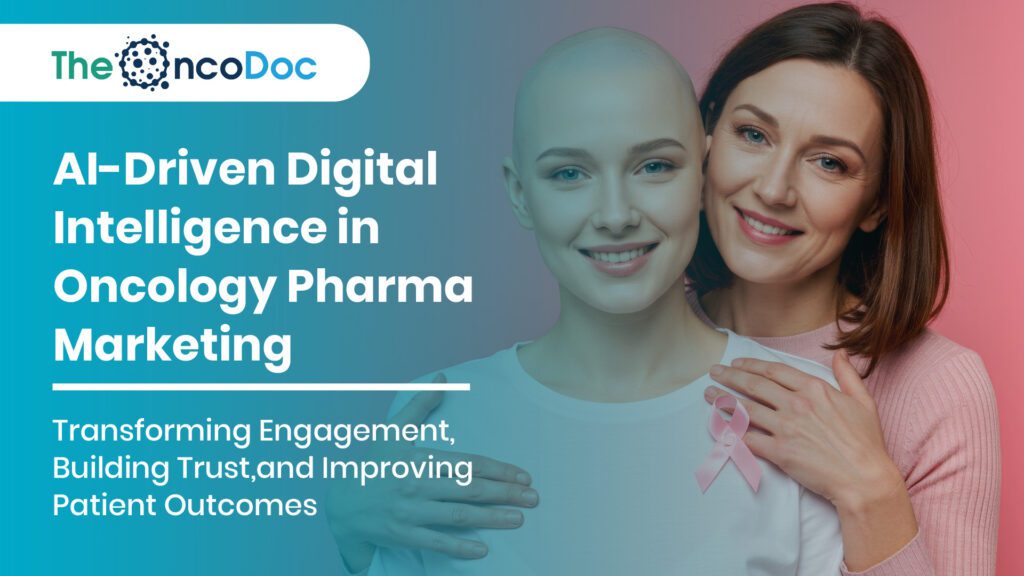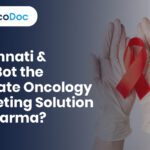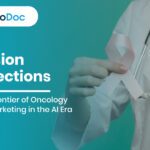Introduction: Oncology Marketing in the Age of Intelligent Transformation
Oncology has always been one of the most challenging and high-stakes fields in medicine. With the rise of precision therapies, immuno-oncology breakthroughs, and the integration of artificial intelligence (AI), oncology pharma marketing is no longer about traditional brand promotion. Instead, it has evolved into a knowledge-driven, patient-first ecosystem, where data, digital tools, and empathy converge to reshape how patients, physicians, and caregivers experience cancer care.
The digital transformation of oncology marketing is not just about adopting new platforms. It is about using AI, advanced analytics, and real-world data (RWD) to create campaigns that deliver hope, education, and trust. From hyper-personalized patient journeys to omnichannel engagement strategies, pharma marketers today are building digital bridges between science and society.
This article explores the future blueprint of oncology pharma marketing, covering AI-driven strategies, digital health integrations, real-world evidence storytelling, and community-centered innovations.
1. AI-Powered Hyper-Personalization for Precision Oncology
One-size-fits-all marketing is obsolete in oncology. AI now enables hyper-personalization at scale, transforming how messages are crafted and delivered.
Pharma companies analyze datasets that include:
- Genetic profiles and biomarker data – allowing campaigns to focus on targeted therapies.
- Physician prescribing behaviors – identifying oncologists most likely to adopt precision treatments.
- Patient engagement patterns – tracking content interactions across social media, search, and apps.
For instance, an oncologist specializing in breast cancer could receive personalized dashboards summarizing trial data on HER2-positive therapies, while a patient searching “lung cancer symptoms” might be guided to a localized awareness campaign with referral links to nearby diagnostic centers.
This precision approach not only enhances trust but also ensures that scientific knowledge reaches the right audience at the right time.
2. Omnichannel Oncology Marketing: Creating Seamless Digital Journeys
Cancer patients and caregivers engage with multiple touchpoints during their journey. To remain relevant, oncology marketers are adopting true omnichannel ecosystems that integrate digital, physical, and emotional experiences.
Omnichannel strategies include:
- Virtual patient portals offering treatment adherence reminders.
- AR/VR modules that explain complex therapies in simple visual formats.
- Mobile apps with an HCP focus that offer CME courses in snackable formats.
- Community WhatsApp groups for awareness, screening reminders, and peer support.
Unlike multi-channel, which merely spreads messages across platforms, omnichannel ensures consistent narratives, allowing patients and doctors to engage with oncology brands across multiple stages of the cancer journey.
3. Building Trust with Real-World Evidence (RWE)
In oncology, trust is everything. Physicians are skeptical of promotional claims, while patients look for authentic stories of survival and recovery. This is where RWE-driven marketing content comes in.
By integrating data from registries, wearables, and patient-reported outcomes, pharma companies can demonstrate:
- Comparative effectiveness of therapies.
- Long-term quality-of-life improvements.
- Regional cancer survival patterns.
For example, a campaign showcasing real patient outcomes from immunotherapy resonates more with oncologists than generic brand claims. Similarly, caregivers value evidence-backed insights into side-effect management over promotional brochures.
4. Engaging General Practitioners (GPs) for Early Referrals
For patients with nebulous cancer symptoms, general practitioners are frequently the initial point of contact. Unfortunately, delayed referrals remain a key challenge in oncology outcomes. To address this, oncology marketing must prioritize GP education and digital support.
Current strategies include:
- AI-driven CME modules delivered via WhatsApp or apps.
- Interactive decision-support tools that guide GPs on referral protocols.
- Localized cancer toolkits with red-flag symptom lists.
By turning GPs into active oncology partners, pharma brands can significantly reduce the symptom-to-diagnosis delay, improving survival rates.
5. Survivor-Led Storytelling and Emotional Campaigns
Cancer affects people emotionally in addition to medically. Oncology marketing campaigns that highlight real survivor journeys have shown higher engagement and trust than fact-heavy promotions.
Survivor-led initiatives achieve:
- 40% higher recall among patients.
- Deeper emotional resonance, reducing fear and stigma.
- Community mobilization, encouraging early screenings.
Digital platforms now amplify these voices through short-form videos, podcasts, and live patient forums, ensuring survivor experiences become powerful tools of awareness.
6. Predictive Marketing with AI and Big Data
Oncology marketing is moving from reactive campaigns to predictive health interventions. AI can analyze search behaviors, electronic health records, and social chatter to detect regional cancer risk spikes.
For instance, a district may launch a targeted lung cancer awareness campaign in response to a sharp rise in searches for “persistent cough remedies.”
This proactive marketing model makes pharma brands not just advertisers, but public health allies.
7. Gamification in Oncology Awareness
Gamification techniques are being used more and more in cancer to encourage patients to take preventative measures.
Examples include:
- Symptom check quizzes that reward users with health scores.
- Community challenges for highest screening participation.
- Digital badges are awarded to cancer sufferers who finish post-treatment activities.
These strategies make health engagement interactive and motivating, particularly among younger demographics.
8. Vernacular and Hyperlocal Oncology Campaigns
India and other diverse markets show that vernacular content builds trust far more effectively than English-only messaging.
- Tamil-language breast cancer awareness videos outperform English by 60% in engagement.
- In rural areas of Assam, local radio jingles increase awareness about oral cancer.
- Folk-theater collaborations spread lung cancer prevention messages in remote areas.
Pharma brands that invest in culturally relevant storytelling achieve stronger impact across diverse populations.
9. Wearables and Digital Health Integration
The use of wearables and connected health devices is transforming oncology engagement. Fitness bands, smartwatches, and AI-powered health apps now provide continuous monitoring, which marketers can use to deliver personalized prevention nudges.
For example:
- A sudden drop in BMI can trigger a notification on cancer warning signs.
- Abnormal sleep patterns may prompt a fatigue management campaign for oncology patients.
- Wearables linked with pharma apps can deliver therapy adherence reminders.
10. Smart Chatbots and Virtual Patient Assistance
Chatbots are becoming essential in oncology marketing, offering 24/7 triage and support.
They can:
- Answer FAQs about cancer symptoms.
- Connect patients to nearby diagnostic centers.
- Provide step-by-step guidance for clinical trial enrollment.
Chatbots integrated into WhatsApp, patient portals, and hospital websites enhance accessibility and reduce treatment delays caused by misinformation.
11. Virtual Communities and Patient Support Networks
Pharma companies are investing in digital patient support ecosystems that foster meaningful engagement beyond treatment. These online communities create safe spaces where patients, caregivers, and survivors can connect and share experiences.
• Peer-to-peer discussions allow patients to exchange coping strategies and reduce isolation.
• Localized emotional counseling provides culturally relevant support in regional languages.
• Expert-led live sessions with oncologists help clarify doubts and build trust in therapies.
Beyond emotional reassurance, these networks serve as powerful insight channels. Patient conversations highlight real concerns, treatment barriers, and unmet needs, enabling pharma marketers to refine communication strategies and design campaigns that are more empathetic, inclusive, and patient-centric.
12. Countering Cancer Myths with Social Listening
The spread of misinformation is a critical challenge in oncology, as false claims can delay diagnosis or push patients toward unsafe alternatives. To address this, pharma companies are turning to AI-driven social listening tools that track conversations across digital platforms.
• These tools identify misleading keywords and trending myths such as “natural remedies can cure cancer” or “chemotherapy is always fatal.”
• Brands can then deploy real-time fact-check campaigns, sharing credible content from oncologists and verified medical institutions.
• Emotional sentiment analysis further allows marketers to adjust campaign tone, ensuring the messaging is not only accurate but also empathetic and reassuring.
By combining speed with sensitivity, social listening enables pharma brands to stay ahead of misinformation, strengthen patient trust, and maintain a balanced dialogue that empowers audiences with truth instead of fear.
13. Future of Oncology Pharma Marketing: Empathy Meets Intelligence
The future of oncology marketing is about more than technology, it is about combining data intelligence with human empathy.
Emerging trends include:
- Digital twins for therapy simulations.
- Emotion-driven marketing campaigns focusing on mental well-being.
- Collaborative ecosystems between pharma, NGOs, and governments.
The oncology marketer of tomorrow will not be a promoter, but a strategic health partner, driving awareness, screening, and survivorship.
14. Voice-First Oncology Awareness: Breaking Barriers of Literacy and Accessibility
As internet penetration grows, voice search and interactive voice response (IVR) campaigns are becoming essential in oncology marketing, especially in rural and semi-urban populations where literacy may be a barrier.
Pharma marketers are now leveraging AI-powered voice tools to deliver accessible cancer education in local languages:
- Voice search optimization ensures that when a patient asks, “Alexa, what are the symptoms of oral cancer?” they receive accurate, branded awareness responses.
- IVR helplines provide instant cancer FAQs in regional dialects for those who do not use smartphones.
- Smart speakers in community health centers play interactive audio sessions on early detection and preventive care.
By humanizing technology through voice, oncology campaigns expand their reach to populations previously excluded from digital-first marketing.
15. Digital Twins and Predictive Simulations in Patient Education
One of the most exciting frontiers in oncology is the rise of digital twins, virtual replicas of patients created from clinical, genomic, and behavioral data. While this technology is currently used in drug development, forward-thinking pharma marketers are beginning to integrate it into patient education campaigns.
Examples include:
- Therapy simulations, where patients see how a targeted therapy may work in a virtual version of their own biology.
- Risk projection visuals, showing lifestyle-driven cancer risks over 10–20 years.
- HCP support, where doctors access simplified digital twin dashboards to explain treatment pathways to patients.
For patients, these simulations make oncology less abstract and more personal, while for pharma marketers, they serve as a powerful trust-building tool rooted in science and visualization.
16. Precision Oncology Market Access: Tackling Disparities Through Data
Despite advancements, inequalities in cancer care access persist, particularly in developing nations and rural regions. Pharma companies must go beyond awareness to tackle systemic disparities in oncology care.
Through AI-driven market access strategies, marketers can:
- Identify geographic oncology gaps (districts with low screening penetration).
- Map socioeconomic determinants of health (SDOH) to highlight affordability barriers.
- Launch tiered awareness campaigns, where urban patients receive digital-first nudges while rural patients are reached through field workers equipped with digital tools.
By making oncology campaigns inclusive and equitable, pharma companies strengthen both brand reputation and community health impact.
17. Emotional Analytics: Measuring the Human Impact of Campaigns
Clicks and impressions mean little in oncology unless they drive real-world change. Increasingly, pharma brands are turning to emotional analytics, AI-driven tools that measure audience sentiment and emotional response to campaigns.
This includes:
- Analyzing facial expressions during video awareness sessions to gauge impact.
- Tracking emotional tone in patient feedback, identifying whether campaigns inspire hope or cause anxiety.
- Mapping longitudinal changes in trust, ensuring communication aligns with empathy.
Such insights allow marketers to course-correct in real time, ensuring campaigns remain compassionate, hopeful, and effective.
18. The Role of Metaverse in Oncology Pharma Marketing
The next evolution of digital transformation lies in the metaverse, a shared virtual space where patients, doctors, and pharma brands can interact in immersive ways. Though still emerging, oncology marketers are experimenting with:
- Virtual oncology expos, where patients explore treatment options via avatars.
- Immersive medical education, allowing oncologists to practice procedures in simulated 3D cancer environments.
- Survivor storytelling in the metaverse, where patients can interact with holographic survivor mentors.
The metaverse enables a blended experience of empathy, education, and science, positioning pharma companies as true digital innovators in oncology.
Expanded Conclusion: From Data to Human Impact
Oncology pharma marketing has entered a transformational era. What began as a digital shift has now become a holistic movement combining AI, emotional intelligence, and digital innovation to reshape cancer care engagement.
From voice-first campaigns and digital twins to emotional analytics and metaverse experiences, the future of oncology marketing lies in balancing cutting-edge technology with the deeply human experience of cancer.
Brands that succeed will be those that measure success not in clicks or prescriptions, but in:
- Lives detected earlier.
- Patients who feel less isolated.
- Communities that gain equal access to awareness and care.
The future of oncology pharma marketing is therefore predictive, inclusive, immersive, and above all, human-centered.
The Oncodoc team is a group of passionate healthcare and marketing professionals dedicated to delivering accurate, engaging, and impactful content. With expertise across medical research, digital strategy, and clinical communication, the team focuses on empowering healthcare professionals and patients alike. Through evidence-based insights and innovative storytelling, Hidoc aims to bridge the gap between medicine and digital engagement, promoting wellness and informed decision-making.



